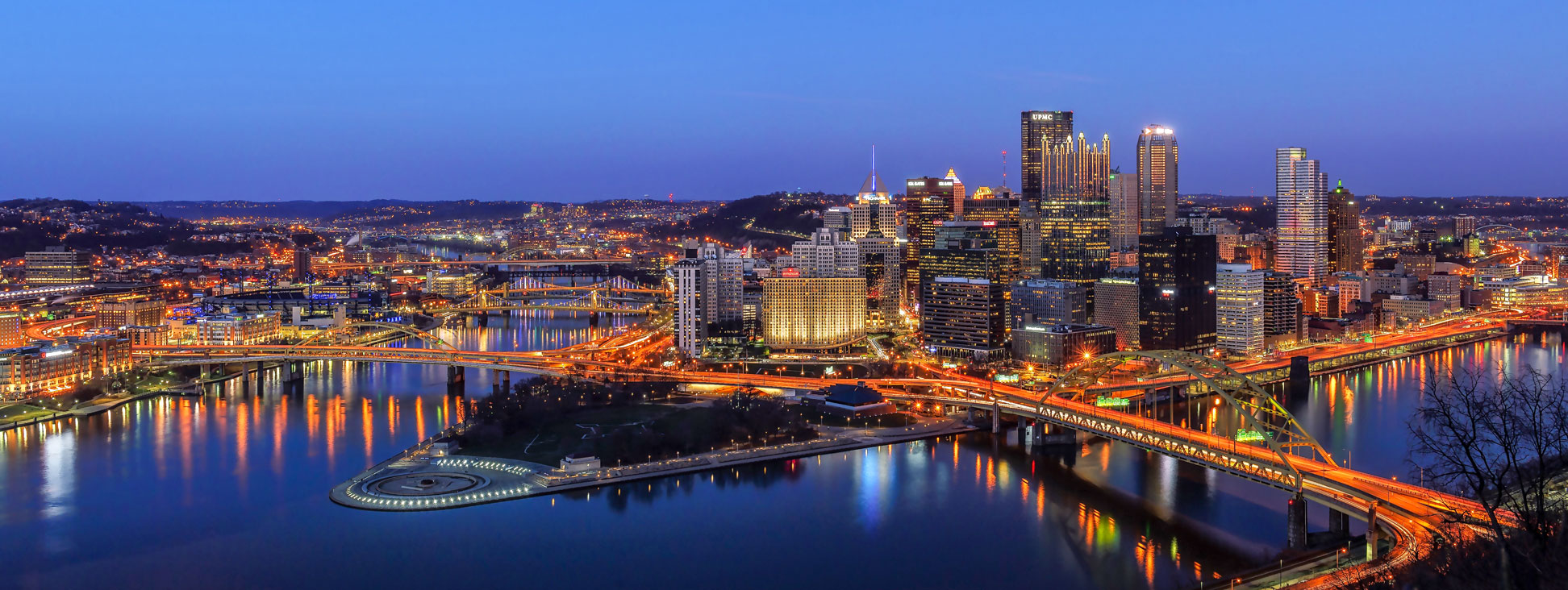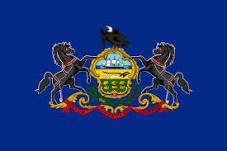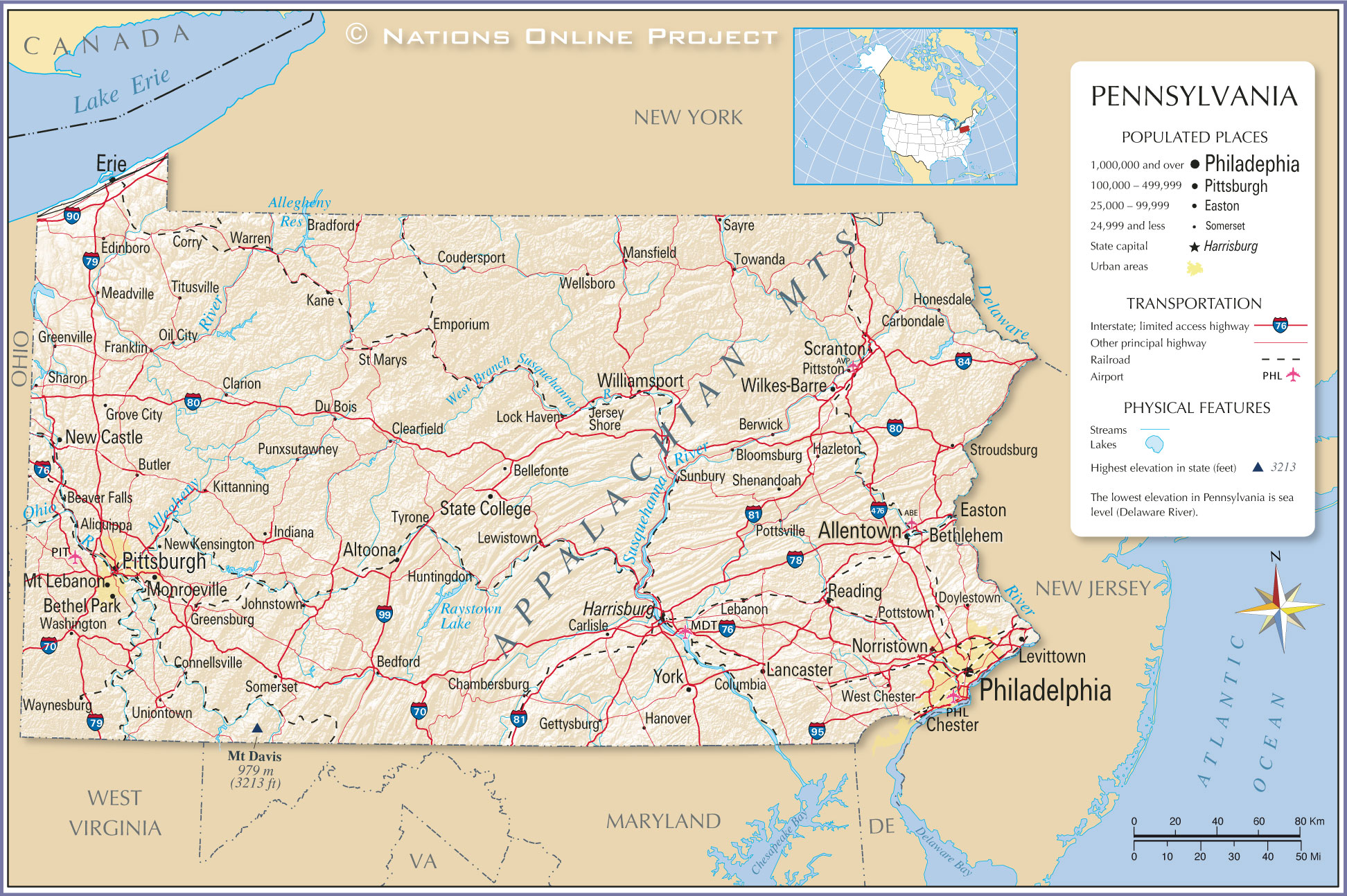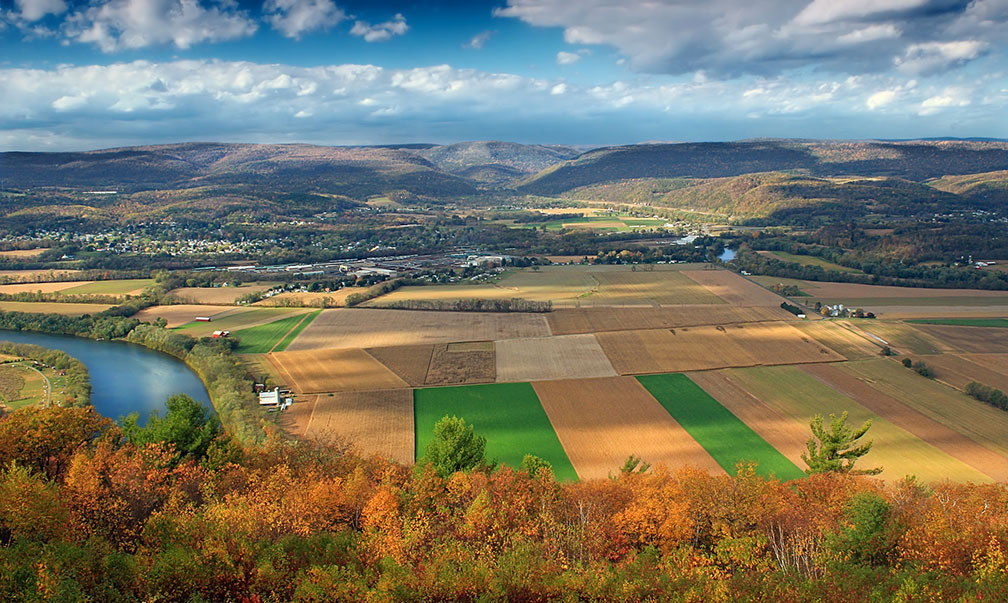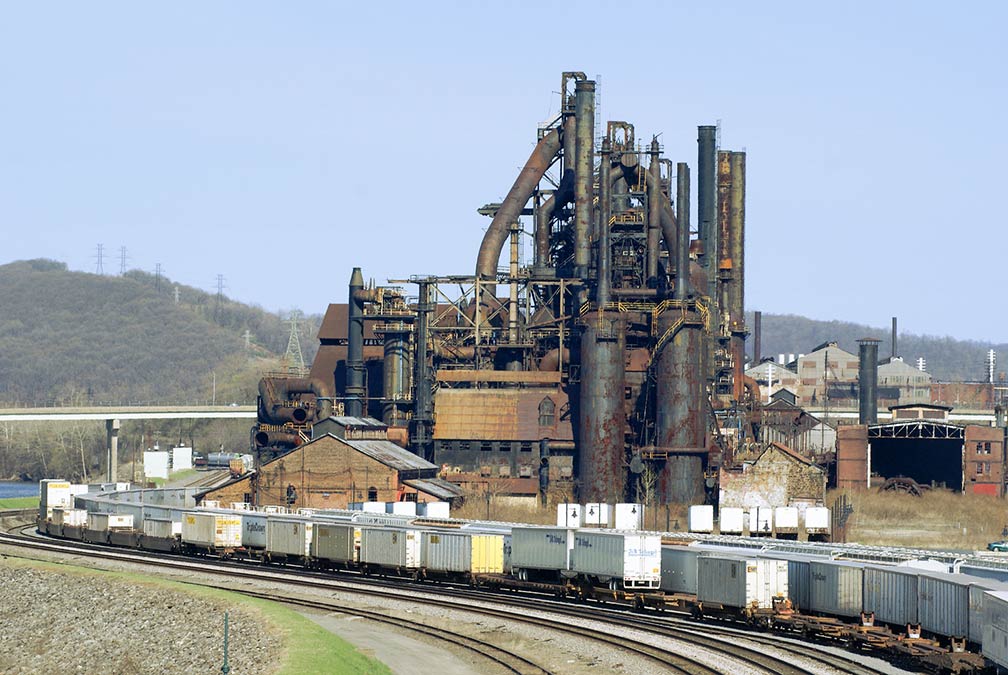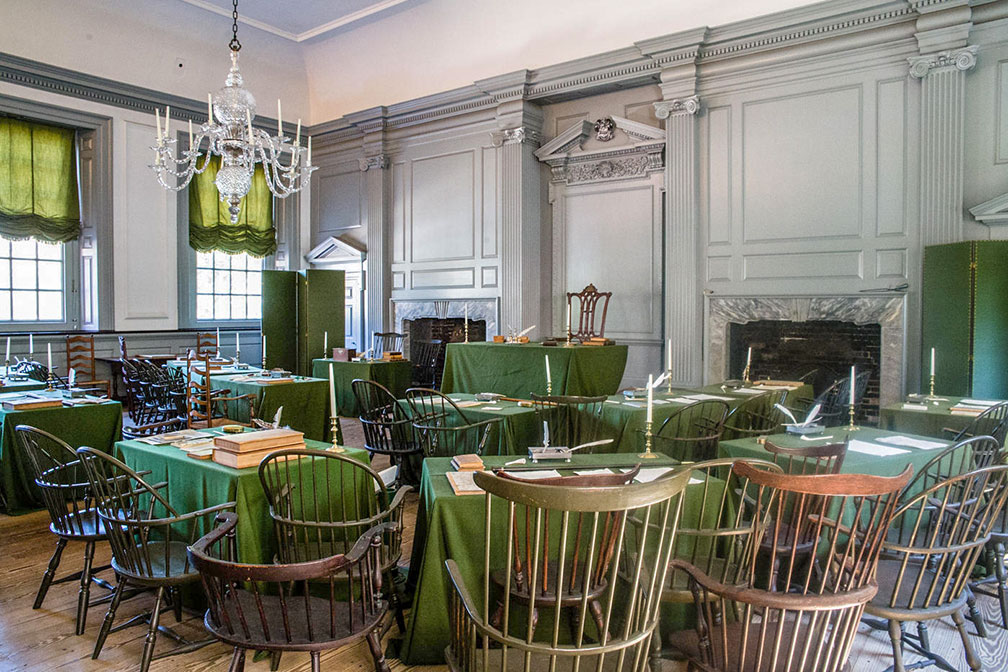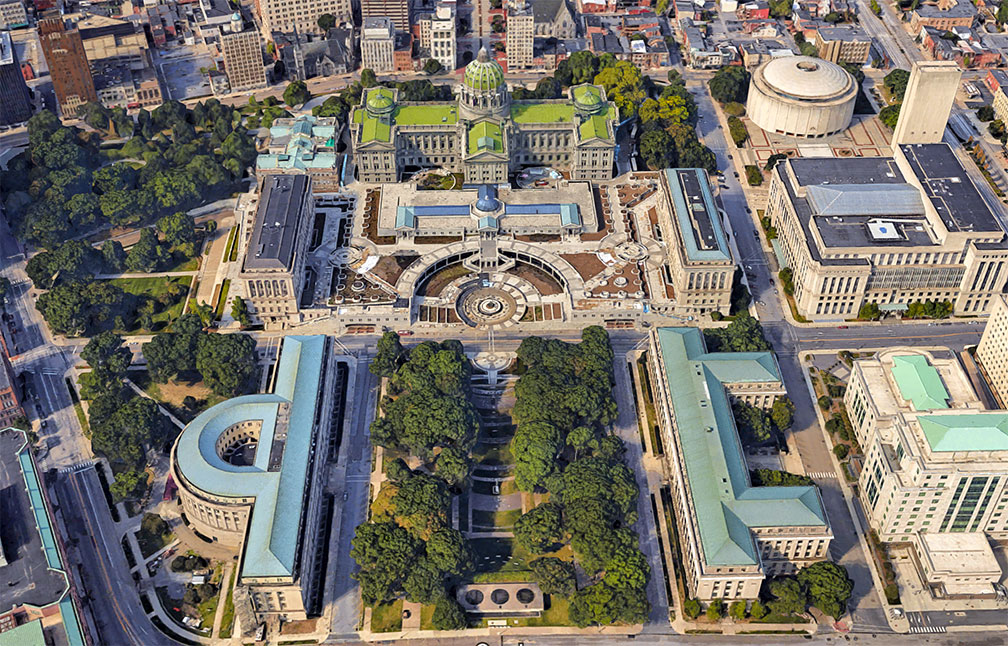Cities and Towns in Pennsylvania
The map shows the location of following cities and towns in Pennsylvania:
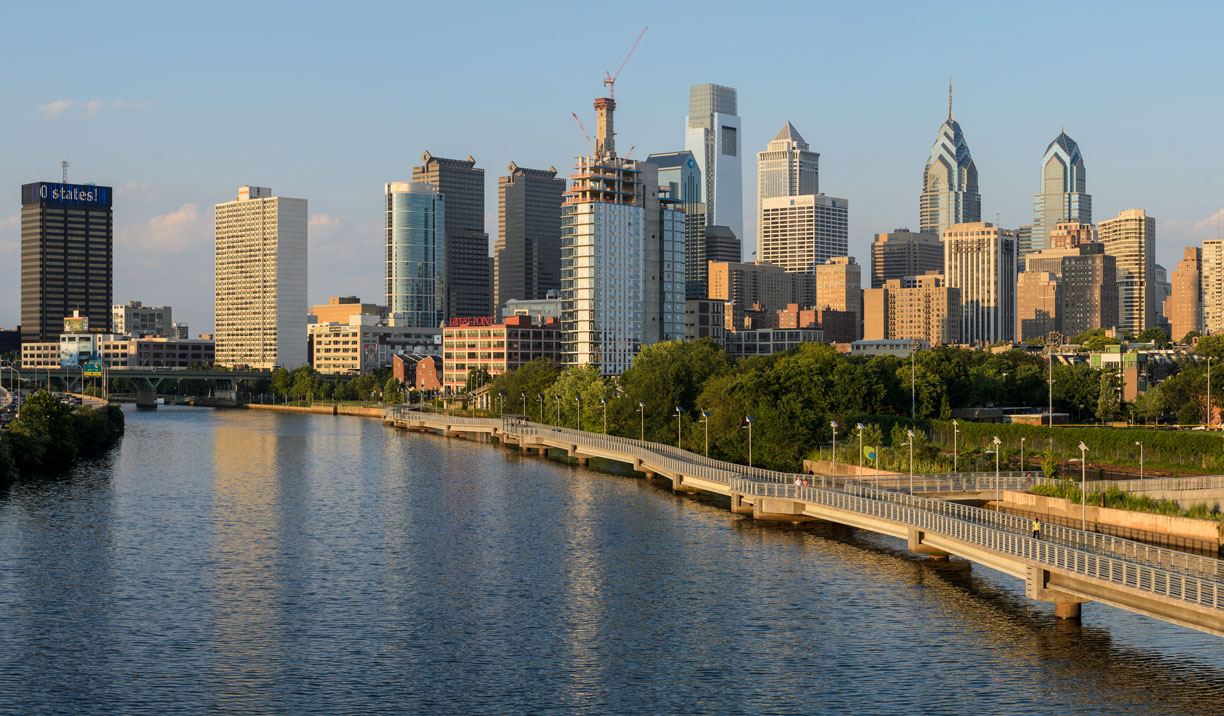 Philadelphia skyline from the South Street Bridge. Philadelphia is the largest city in the Commonwealth of Pennsylvania and one of the oldest cities in the United States.
Philadelphia skyline from the South Street Bridge. Philadelphia is the largest city in the Commonwealth of Pennsylvania and one of the oldest cities in the United States.
Image: King of Hearts
Largest cities in Pennsylvania with a population of more than 50,000:
Philadelphia (1,603,000),
Pittsburgh (303,000), Allentown (125,800), Erie (94,800), Reading (95,100), Scranton (76,300), Bethlehem (75,800), Lancaster (58,000),
Harrisburg (50,000)
Population figures in 2020
Largest Airports in Pennsylvania
The largest
airport in the state is
Philadelphia International Airport (
IATA code: PHL),
other international airports are
Pittsburgh International Airport (IATA code: PIT),
Harrisburg International Airport (IATA code: MDT),
Allentown's Lehigh Valley International Airport (IATA code: ABE)
Other cities and towns in Pennsylvania
Aliquippa, Altoona, Beaver Falls, Bedford, Bellefonte, Berwick, Bethel Park, Bloomsburg, Bradford, Butler, Carbondale, Carlisle, Chambersburg, Chester, Clarion, Clearfield, Columbia, Connellsville, Corry, Coudersport, Doylestown, Du Bois, Easton, Edinboro, Emporium, Franklin, Gettysburg, Greensburg, Greenville, Grove City, Hanover, Hazleton, Honesdale, Huntingdon, Indiana, Jersey Shore, Johnstown, Kane, Kittanning, Lebanon, Levittown, Lewistown, Lock Haven, Mansfield, Meadville, Monroeville, Mt Lebanon, New Castle, New Kensington, Norristown, Oil City, Pittston, Pottstown, Pottsville, Punxsutawney, Sayre, Sharon, Shenandoah, Somerset, St Marys, State College, Stroudsburg, Sunbury, Titusville, Towanda, TyronendianaI, Uniontown, Warren, Washington, Waynesburg, Wellsboro, West Chester, Wilkes-Barre, Williamsport, and York.

